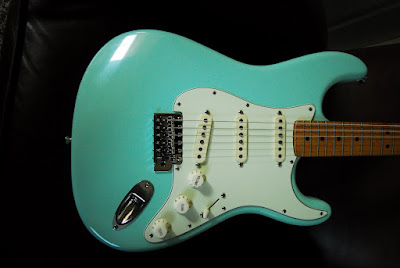
You need to decide what sort of Custom Stratocaster you want to build. Are you looking for something that faithfully recreates a guitar of a certain era? Perhaps there are aspects of a look from one era, but the feel and sound of another era. For example, I love the look of the 50's and 60's, with colors that were borrowed from the cars of that time period (Seafoam Green, Sonic and Daphne Blue, Coral and Fiesta Red), and necks that are now aged to a rich golden yellow, but I am not very excited about necks with 7.5” radius and I really don't care for vintage frets.
A vintage style custom Stratocaster from this era also works for me because I mostly play blues (BB King, SRV, anything 12-bar) and pop punk/rock (Green Day, Coldplay) and I am middle-aged. If you are younger and more inclined to play contemporary music, you might want a look, and certainly a sound, that goes along with that.
A whole other direction is to create a Strat that is unlike anything that has come from Fender. Maybe you want to do something with a quilted maple veneer, or perhaps and exotic solid wood like koa, or perhaps it is not the look of the wood but the sonic qualities from something like mahogany.
A whole other direction is to create a Strat that is unlike anything that has come from Fender. Maybe you want to do something with a quilted maple veneer, or perhaps and exotic solid wood like koa, or perhaps it is not the look of the wood but the sonic qualities from something like mahogany.
You will need to do some research if you do not already have a complete vision. Here are some galleries for you to look through along with whatever you can find on your own:
Hereare some other very useful resource that is list of other guitar building and repair sites. Lots and lots of links:














